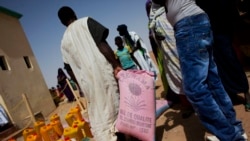Today, 870 million people suffer from chronic hunger. In sub-Saharan Africa alone, nearly one quarter of the population-some 234 million people- goes to bed hungry most days. Many are small-holder farmers who get their food and income farming small plots of land.
That is why Feed the Future, President Barack Obama’s global hunger and food security initiative,
is centered on smallholder farmers, especially women. And because hunger and extreme poverty go hand in hand, to fix one we must address the other.
Through Feed the Future, the U.S. Government has been leading efforts to support partner countries develop their agriculture sectors to spur economic growth that increases incomes and reduces hunger, poverty, and undernutrition.
A major emphasis of the initiative is on helping ensure farmers have the know-how and access to the improved tools and technologies to produce greater yields and transform local economies, and focused investments in research and technology that can lead to new resilient crop varieties can help improve productivity while helping farmers adapt to changes in climate.
Speaking at the Chicago Council Global Food Security Symposium in Washington, D.C. on May 21, USAID Administator Rajiv Shah, said: At the end of the day, we’re really talking about a very simple concept.” [Our goal is to ensure that] “every farmer has great seeds. Every farming community is connected to a market. And every child has the nutrition they need to grow and thrive.”
And so, in 2012, Feed the Future has helped 7 million farmers in 19 countries adopt improved technologies or management practices, such as drip irrigation and improved seeds.
We believe that the best way to help end hunger and poverty is to harness the power of science. So, since 2008, more than 34 new drought-tolerant maize varieties have been developed and deployed to over 2 million smallholder farmers in Africa through joint efforts of USAID, the Gates Foundation, and the International Maize and Wheat Improvement Center.
“Ending hunger is hard. And ending extreme poverty is harder still,” said Dr. Shah.
“By introducing innovation across the entire continuum from farm to market to table, we have the opportunity to tackle extreme poverty by the roots and shape a world with far more partners in trade than recipients in aid.”
















